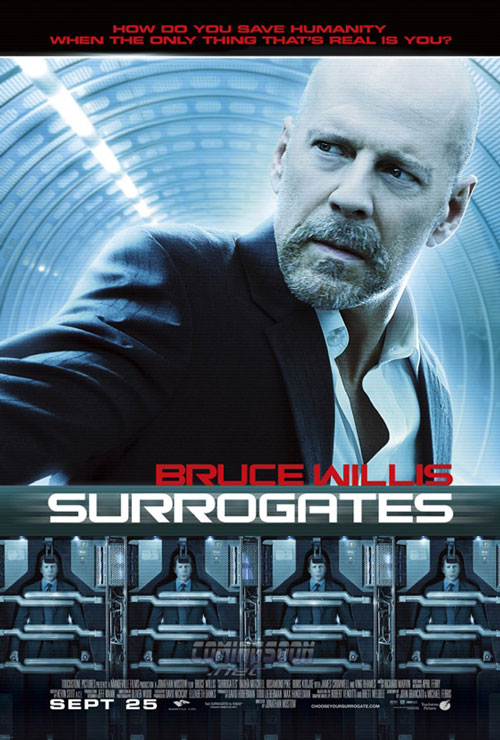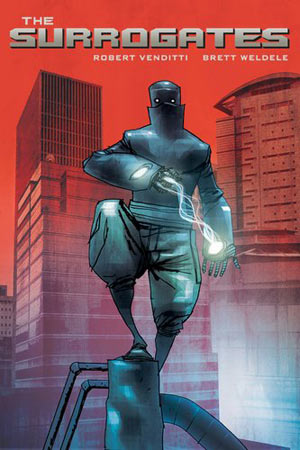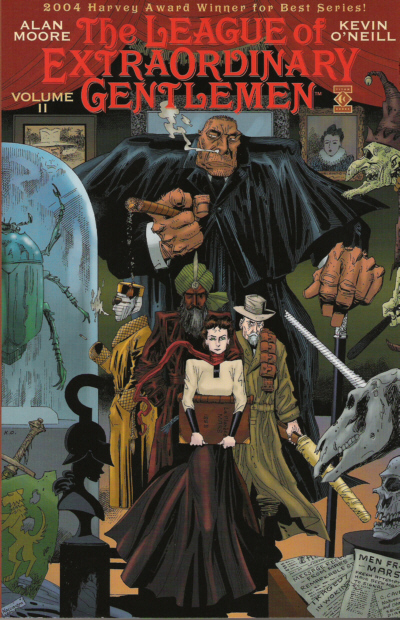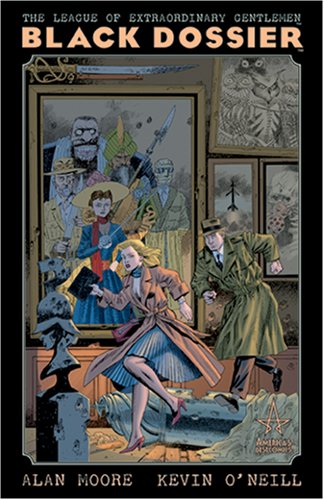John Buys Comics: The New Look John Buys Comics
/In the wake of the near-death experience of not having a damn computer for two weeks I am retiring John Buys Comics, I think. It was conceived of when there were several people doing reviews on this site every week and the format that I set up for myself, loose as it was, was a bit too chore-like. And let me remind you: I grew up on a farm, where the word “chore” was taken literally, as in “pile up a cord of wood after school” or “shovel several times your weight in horse manure every day” and a young man can develop creative procrastination to a fine art.
So instead of writing a pocket review for every damn thing I read and saying the same damn thing over and over again, I’m going to pick out a few extraordinary or noteworthy or terrible books per week and give them the business. And maybe I’ll make up some semi-arbitrary categories to fill out, because I like doing that. Huzzah!
I might still call it John Buys Comics, but we'll all know it won't be the same.
Incredible Change-Bots Two (Top Shelf)

Why's It Here: Because it's the sequel to one of my favourite things. Also, the original comic is one of the most accessible books that I own - more people have read it just because it was lying around on my coffee table than have tried any of the many books that I occasionally feel the need to wax rhapsodic about in mixed company. There's just something about those slightly goofy-looking giant robots that immediately draws in basically anyone who has watched cartoons over the last twenty or so years.
The Non-Spoiler Summary: The Incredible Change-Bots return to Earth! Shootertron isn't dead! There are further political allusions!
The Very Best Thing About It: More face-time for Microwave, Popper and Soupy, my very favourite robots ever.
The Very Worst Thing About It: I can never shelve these books with the rest of my comics because they're so small - the other books end up bending over them and getting all weird looking. So they just kind of float around in a pile with all of the other odd-sized books until I maybe some day install a tiny shelf for them to have to themselves.
Who Made It? Jeffery Brown, the scamp.
Closing Comments: Oh man I just found this trailer for the first book: check it out.
Hellboy: Buster Oakley Gets His Wish (Dark Horse)
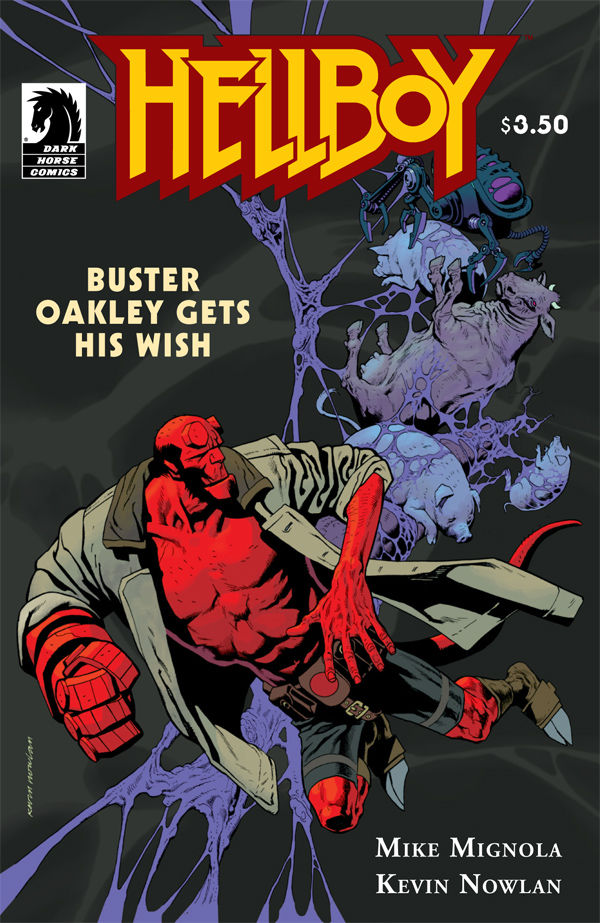
Why It's Here: Because I love Hellboy with all my little blackened heart, that's why. And furthermore, I love Hellboy one-and-done stories even more than that. Even more than the main storyline, the one-off stories convey the sense that Hellboy live in a complex and interesting world that we are only seeing a piece of. All of the monsters and zombies and - in this case - aliens have crazy back stories and motivations and so forth and we only get to see a little bit of the picture before Hellboy punches them to death. It appeals to the part of me that used to scour the library and used bookstores and so forth back in pre-internet days, piecing together bits of information on one topic or another. With more punching.
Non-Spoiler Summary: It's a Hellboy yarn featuring aliens.
The Very Best Thing About It: The flying pig. Unquestionably.
The Very Worst Thing About It: That Mike Mignola didn't draw it? But that's just whining, because the fact is that every non-Mignola artist that has been working on these books for the last few hears has been doing a phenomenal job. And hell: there is absolutely no way that we would be seeing one to three books per month from the various Hellboy series if one guy were still doing everything, so I'll just shut my big mouth, I guess.
Who Made It? Mike Mignola did the writing and... Heck, it looks like Kevin Nowlan did everything else, including letters and presumably colouring, because there's no credit for that here. Now I'm even more embarrassed about wishing for Mignola art.
Closing Comments: Looks like Dave Stewart did some colouring as well. Thanks, Dark Horse web site!
And that's that for this week because I also bought that enormous Usagi Yojimbo box set that came out last year with all of the Fantagraphics stuff in it and I want to get back to reading it in enormous, three-hour instalments.

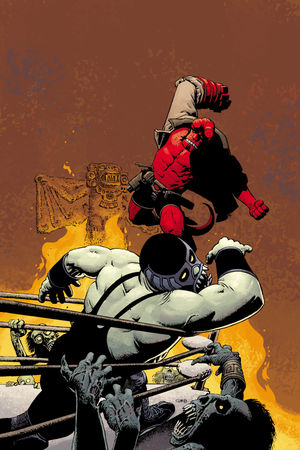 Ahhhh…
Ahhhh… There’s a pretty good chance that you caught the preview for this that was floating around the last month or so but just in case, here’s the skinny: it’s written by Chris Robeson and drawn by Michael Allred, and it’s about a girl who is a zombie, but not the corpse-lookin’-lurch-around-the-countryside type, just a bit pale, a bit dead. The catch is that unless she eats a fresh human brain each month, she will become the lurching and mindless sort of zombie. To facilitate her pursuit of brains, Gwen (that’s her name) works as a gravedigger.
There’s a pretty good chance that you caught the preview for this that was floating around the last month or so but just in case, here’s the skinny: it’s written by Chris Robeson and drawn by Michael Allred, and it’s about a girl who is a zombie, but not the corpse-lookin’-lurch-around-the-countryside type, just a bit pale, a bit dead. The catch is that unless she eats a fresh human brain each month, she will become the lurching and mindless sort of zombie. To facilitate her pursuit of brains, Gwen (that’s her name) works as a gravedigger.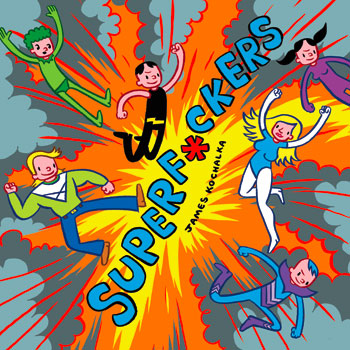 How happy was I to see this collection? SO HAPPY. I used to have access to the individual issues of this comic but then lost them in what can only be described as a messy roommate divorce. What fun to have them again!
How happy was I to see this collection? SO HAPPY. I used to have access to the individual issues of this comic but then lost them in what can only be described as a messy roommate divorce. What fun to have them again!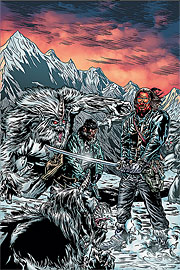 THIRD ISSUE RECAP: Sparta is a town in… another dimension or a fantasy land or the future, I’m not sure. Or maybe someplace else. Wherever it is located, it appears to be a football-obsessed small American town. Look a little closer, though, and there are a lot of strange things about the place, like the fact that its citizens are encouraged to get ahead by any means necessary, up to and including murder, as long as they don’t get caught. The people of Sparta don’t know anything about sexual reproduction - their babies are delivered on a semi-annual basis by the Maestro, their sinister blue Governor. And nobody leaves town because they’ll probably be eaten by yeti.
THIRD ISSUE RECAP: Sparta is a town in… another dimension or a fantasy land or the future, I’m not sure. Or maybe someplace else. Wherever it is located, it appears to be a football-obsessed small American town. Look a little closer, though, and there are a lot of strange things about the place, like the fact that its citizens are encouraged to get ahead by any means necessary, up to and including murder, as long as they don’t get caught. The people of Sparta don’t know anything about sexual reproduction - their babies are delivered on a semi-annual basis by the Maestro, their sinister blue Governor. And nobody leaves town because they’ll probably be eaten by yeti.